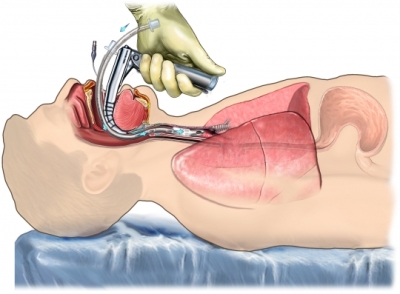Botulism
Description of botulism
Botulism – a potentially fatal disease, the cause of which is a toxin, produced by a bacterium called Clostridium botulinum. This bacterium is found in soil and lakeshores, bays and seas. The intestines of fish, mammals, crabs and other shellfish may contain C botulinum and its debate. Bacterial spores can remain fresh and properly cooked foods.
The reasons for botulism
The disease can cause a very tiny amount of botulinum toxin. People come into contact with the toxin in three ways:
- Food – It may be contaminated with bacteria and their toxins. This toxin can cause botulism. Food, which may be contaminated with the toxin:
- Home canned;
- Sausage;
- Meat products;
- Seafood;
- Canned vegetables;
- Honey;
- If an infant swallows spores C botulinum, they develop in a child's body and will produce a toxin. Unlike adults and older children, babies sick from toxin, produced by bacteria, growing in their own intestines. Honey – the main source of infant botulism. Other sources of infection include soil and dust;
- Bacteria can enter the body through wounds. In this case, they are spread throughout the body via the bloodstream.
In some cases, the sources of bacteria in contact with the human body are unknown. Botulism toxin It is a potential source of bioterrorism.
Risk factors for botulism
Factors, increase the risk of botulism include:
- The consumption of improperly prepared canned;
- For infants – consumption of honey;
- The use of intravenous drugs (rarely).
Symptoms of botulism
Symptoms begin to appear from the face and eyes, and progressing down on both sides of the body. If botulism is not treated, arm muscles, Foot, trunk, as well as the respiratory muscles can become paralyzed, and death can occur.
Symptoms can range from mild to severe and include:
In adults,:
- Muscular weakness;
- Dizziness;
- “Male” in the eyes or blurred vision;
- Fallen eyelid;
- Swallowing problems;
- Dry mouth;
- Sore throat;
- Gibberish;
- Labored breathing;
- Constipation.
Children:
- Constipation;
- The child does not eat and does not suck;
- Slackness;
- Poor muscle tone.
When the cause of botulism food, Symptoms usually begin within 36 hours after eating contaminated food. In some people, the symptoms are apparent within a few hours. Sometimes the symptoms are not observed in a few days. Some people experience nausea, vomiting and diarrhea.
When a wound is the cause of botulism, Symptoms appear within 4-14 days.
Diagnosis of botulism
The doctor will ask about your symptoms, history, possible sources of exposure, and perform a physical exam. Be prepared to answer questions about, where you were and what they ate. Blood, chair and stomach contents will be tested for the presence of toxin. Samples of questionable food may also be checked. Special tests to confirm a diagnosis may take several days.
Tests, to rule out other conditions may include:
- Blood tests;
- MRT – test, which uses magnetic waves, to make pictures of the tissues in the body;
- Analysis of the cerebrospinal fluid;
- And electromyogram nerve conduction tests.
Treatment with botulinum toxin poisoning
Maintenance therapy
The most serious complication is respiratory failure. Treatment is aimed at maintaining an adequate supply of oxygen. Patients may require mechanical ventilation and close monitoring in an intensive care unit. It may also be necessary to tube feeding.

Antitoxin
Receiving antitoxin in the early stages may reduce the progression of symptoms and reduce paralysis, it does not stop the disease process.
Output botulism toxin
Methods for eliminating toxins include:
- Enema;
- Aspiration of gastric contents;
- Medication to stimulate vomiting;
- The operation to clean wounds;
- Antibiotics to treat a wound infection.
Preventing Botulism
Exposure to high temperatures destroys the botulism toxin. Methods of prevention of botulism include:
- Do not feed honey to children under one year old;
- Bake potatoes without foil;
- Do not try the taste of spoiled food;
- Do not eat canned swollen cans;
- Boil home-canned foods for 10-20 minutes before the meal;
- Practice good hygiene when canning foods;
- Seek medical care for wounds, especially if the wound looks infected (redness, pus, the sensitivity of the affected area);
- Do not take drugs.
